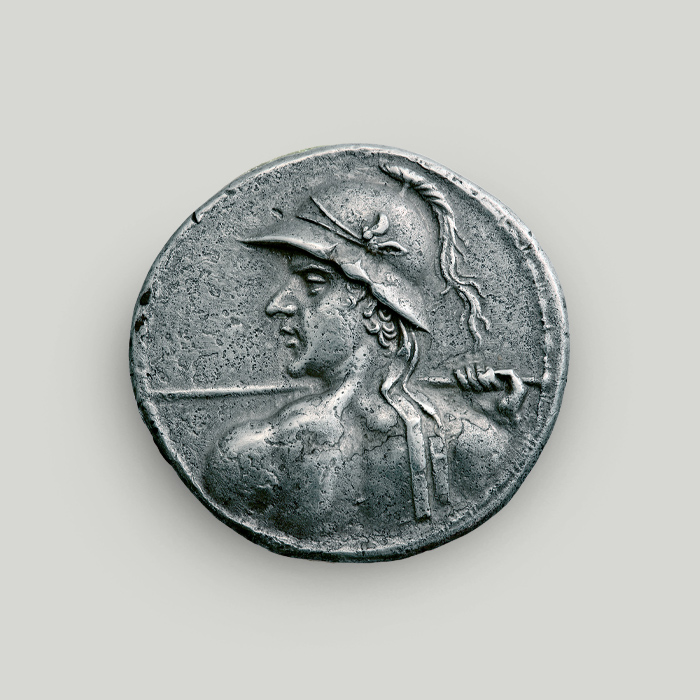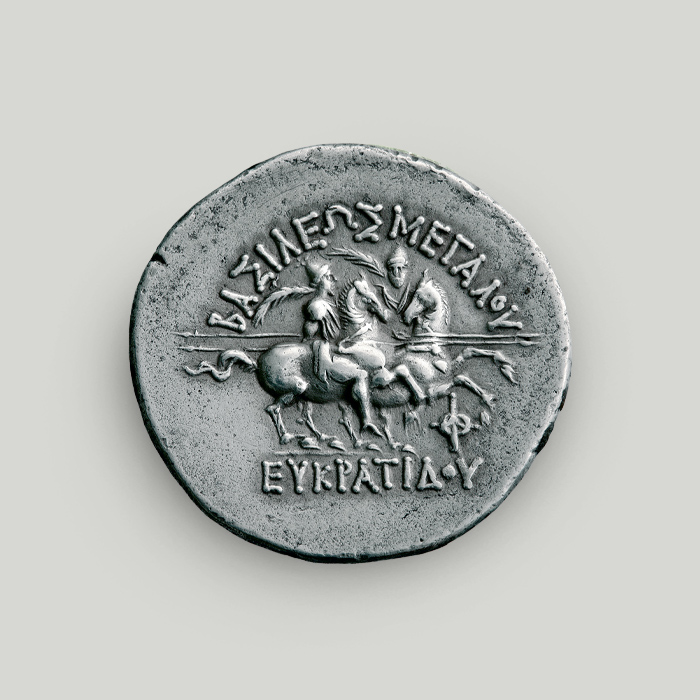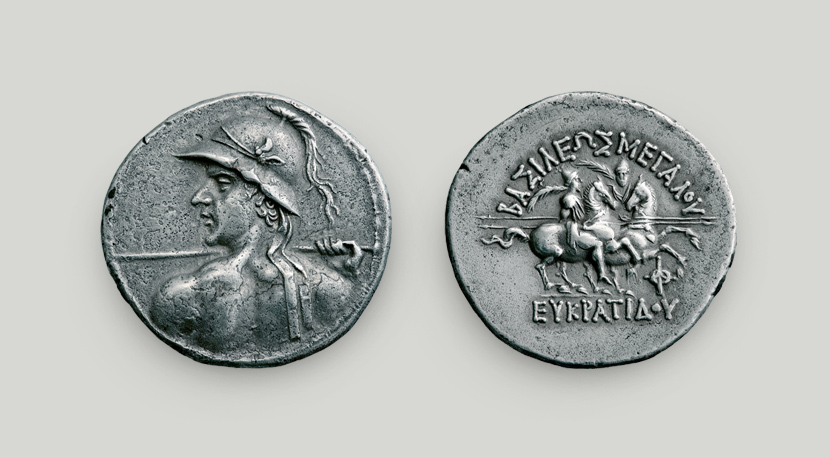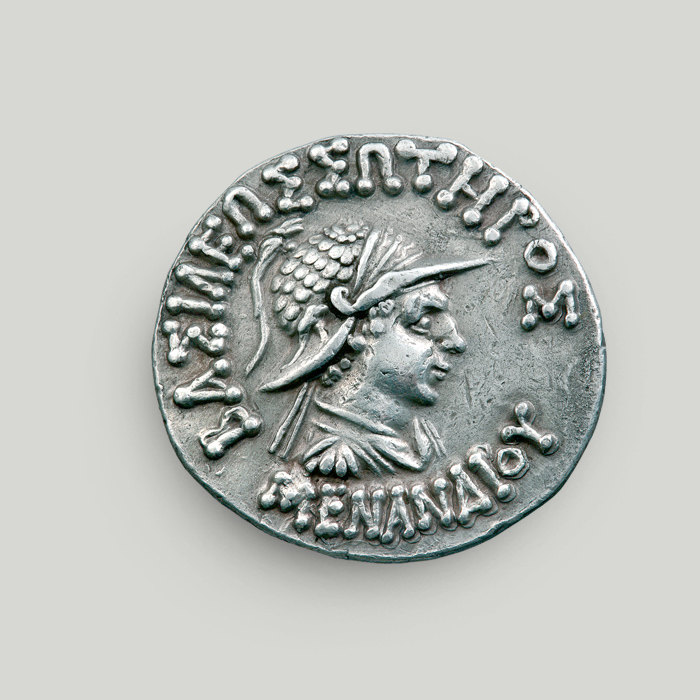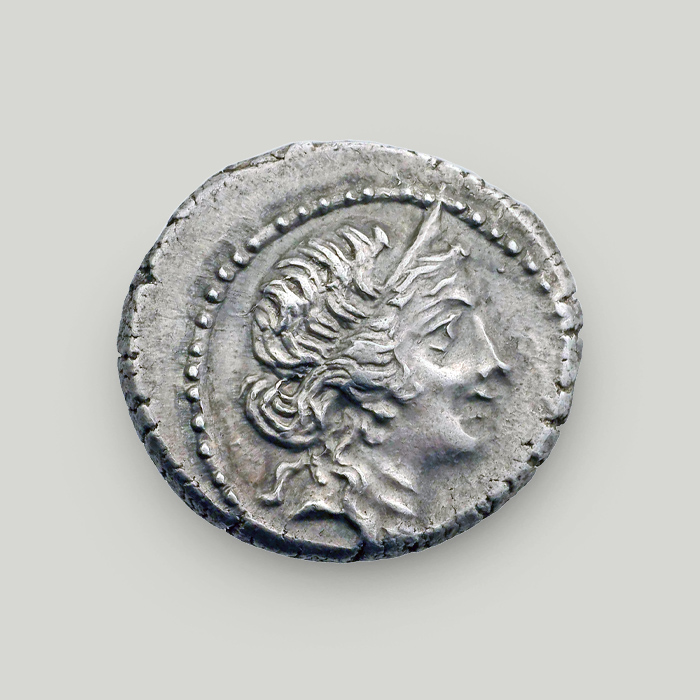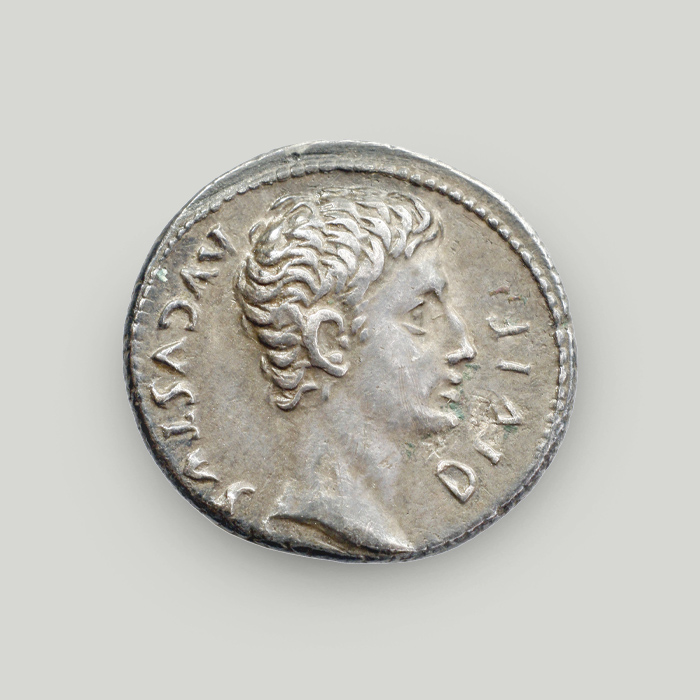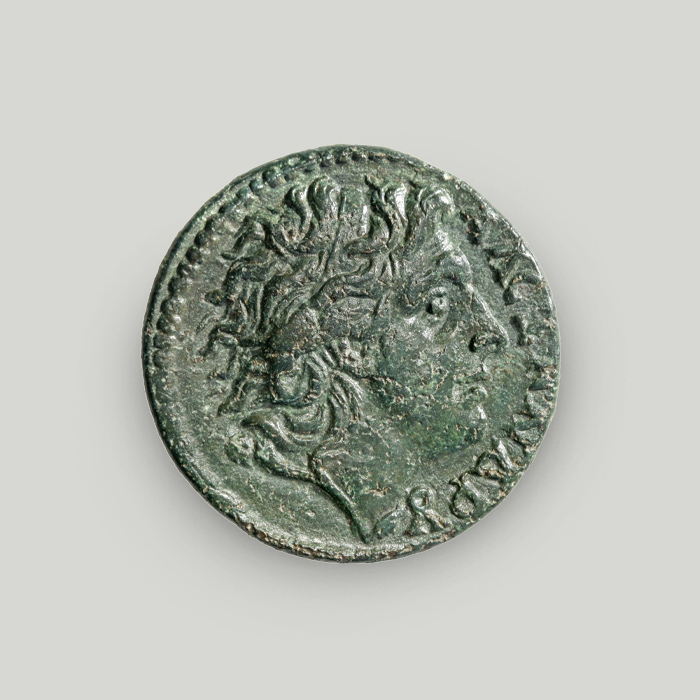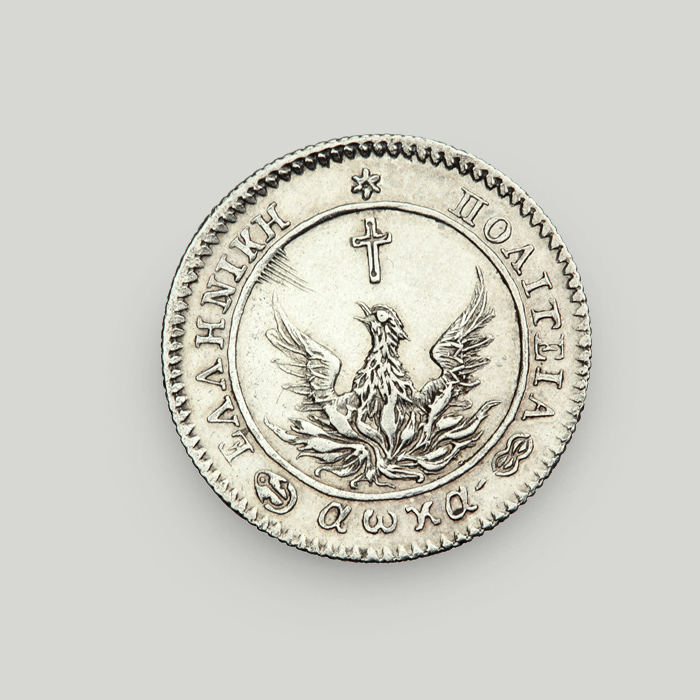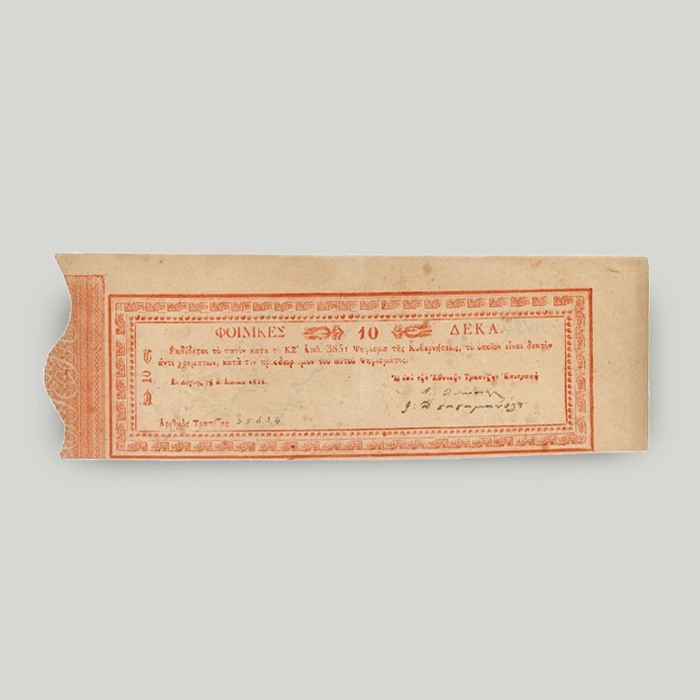Silver tetradrachm of Eucratides I, Bactria
The kingdom of Bactria (present-day Afghanistan) was at the edge of the then-Greek world, at the easternmost point ever reached by Greek troops. The silver tetradrachm of Eucratides I of Bactria depicts the king’s back and head in profile facing left, so that his fit, robust frame stands out. This depiction is a truly unique occurrence in ancient numismatics.
Obverse
Bust of Eucratides I turned so that his back and head in profile facing left are visible. The king wears a plumed helmet and holds a spear in his right hand. The figure is rendered in impressive deep relief, especially when it comes to the back and shoulder muscles.
Reverse
Horse-riding Dioscuri in profile facing right. They hold palm branches in one hand and spears in the other. There is a monogram under the horses’ front hooves. The legend around the type reads ΒΑΣΙΛΕΩΣ ΜΕΓΑΛΟΥ ΕΥΚΡΑΤΙΔΟΥ (of the great king Eucratides).
At the edge of the Greek world
Our knowledge on the kingdom of Bactria is limited and mainly based on surviving coinage. Its territory covered a part of present-day Afghanistan. It is actually the easternmost point ever reached by the troops of Ancient Macedonian king Alexander the Great.
According to historical testimonies, the people of Bactria revolted as soon as news of Alexander’s death broke.
Greek soldiers were still stationed there, awaiting permission to return home. Therefore, a force of 20,000 infantry and 3,000 cavalry was formed to suppress the revolt.
Troops were also sent by the Greek central administration of Babylon. The revolutionaries were killed in the ensuing clash.
Bactria, an independent kingdom
Following Alexander’s death, the rival generals of his army known as the Diadochi (Greek for successors) fought over his empire. During that period, but also after the individual kingdoms were established, Bactria was under the control of the Seleucid Empire.
However, the Satraps of Bactria, Diodotus I Soter and his son Diodotus II, rebelled against the Seleucid Empire and gained their independence around 250 BCE. Bactria was now an independent kingdom.
A little later, Diodotus II was usurped and succeeded by Euthydemus I. According to testimonies, Euthydemus was able to successfully withstand the siege of the city of Bactria by Antiochus III of the Seleucid Empire. The siege ended with a peace treaty that recognised Euthydemus as king of Bactria.
One of the most important kings
Eucratides I, the king depicted on the coin, was one of the most important kings in the area. He showed early signs of military and leadership skills.
In 171 BCE he raised an army and revolted against Demetrius II to become king of Bactria.
Over his reign, he significantly expanded his kingdom. For this, he earned the title “Eucratides the Great”.
His expansionist ambitions brought him as far as India. That campaign would soon result in the establishment of the Hellenistic kingdom of India.
According to ancient sources, Eucratides founded Eucratidia, a city northeast of Bactria straddling the Dargamanes River, a tributary of the Oxus River.
Scheming within the family
On his way back from the campaign to India, Eucratides was murdered by his own son Plato, who had designs on the throne. Plato was said to have run him over with a chariot. He then went on to say he had not killed his father, but a public enemy. Such was his hatred for his parent.
Not long afterwards, Eucratides’ younger son, Heliocles, murdered Plato to avenge his father, hence his sobriquet “the Just”.
Precious research material
Coinage from Bactria is a particularly valuable tool in historical research. Despite the kingdom being at the extremities of the then-Greek world, the quality of the coins issued by its kings is of paramount importance.
The study of these coins has shed light on questions of dating and revealed the lines of succession and relations between the rulers of Bactria.
The coins are also exemplary cases for the study of portraiture on coinage. All of them have quite realistic portraits of the respective rulers on the obverse.
Depictions of Bactrian kings on the coins are accompanied by a variety of sobriquets including Dikaios (the Just), Megalos (the Great), Soter (the Saviour) etc. Such epithets aimed at increasing the king’s popularity among the populace.
The obverse usually depicts heroes and deities.
A timeless logo
The type on the reverse of the silver tetradrachm of Eucratides I has been the logo of Afghanistan’s Central Bank since 1939.
The same logo also appears on Afghan banknotes.
A unique depiction of the king
The silver tetradrachm of Eucratides I is one of the most impressive coins minted in the Hellenistic kingdom of Bactria.
It is a truly unique occurrence in ancient numismatics. This is because the obverse depicts the king’s back and head in profile, so that his robust, muscular frame stands out.
Holding a spear in his right hand, he appears ready to charge into battle. Therefore, he sets the example for his subjects.
The Dioscuri
On the reverse, the type is inspired from Greek mythology. The scene depicts two men on horseback, holding palm branches and spears.
These are Castor and Pollux, also known as the Dioscuri, twin half-brothers and heroes. Their mother was Leda, and their sisters were Helen of Troy and Agamemnon’s wife Clytaemnestra. Castor was the son of Tyndareus, a mortal, while Pollux the demigod son of Zeus.
As a pair, the Dioscuri were a symbol of bravery, magnanimity and virtue. Eucratides I clearly selected this depiction for the coin type to advertise these qualities as his own. Such propaganda is also supported by the adjective in the legend ΒΑΣΙΛΕΩΣ ΜΕΓΑΛΟΥ ΕΥΚΡΑΤΙΔΟΥ (of the great king Eucratides).
Fractions and etymology
As suggested by its name, the tetradrachm equalled 4 drachmas. Each drachma equalled 6 obols.
Before the invention of coins, people used iron spits of 1-1.5 meters in length for their daily transactions.
The spits was called ovelos, and 6 of them were considered a standard handful. This handful was later dubbed “drachma”, as it could be grasped (drattomai in Ancient Greek) in a person’s fist.
When coins started to circulate, the word ovelos (the previously used spit) changed to ovolos (“obol” in modern numismatics) and was used to denote the value once held by 1 spit, i.e. 1/6 of a drachma.
The Alpha Bank Numismatic Collection is not open to the public.
Research visits to the Numismatic Collection can be organised upon request.
Contact us to book your visit.
